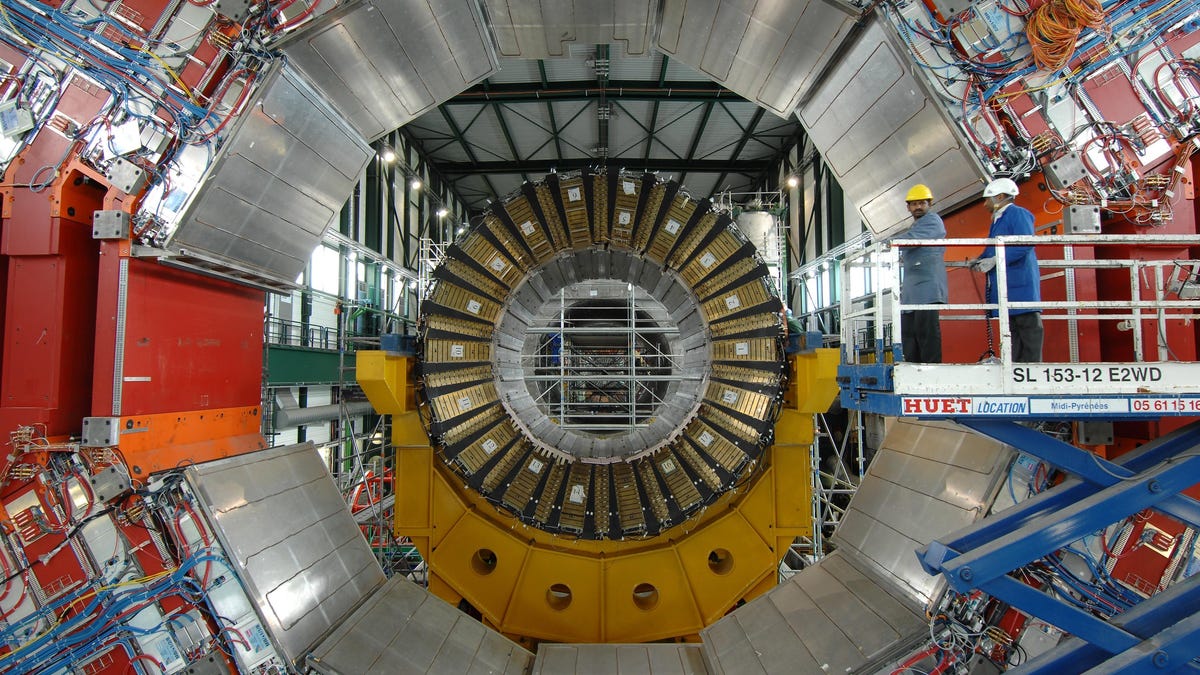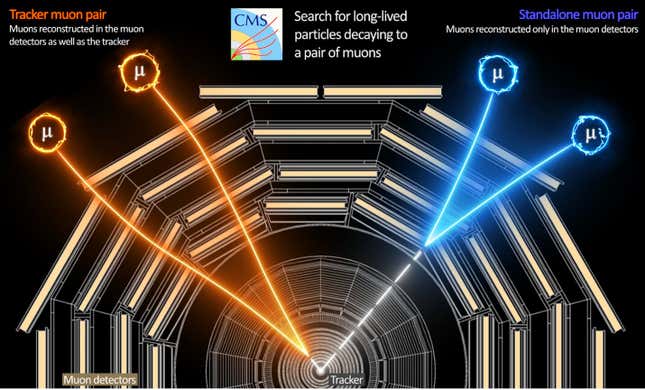
Scientists engaged on CERN’s Compact Muon Solenoid (CMS) experiment have published the newest knowledge of their seek for a long-lived unique particle often called the darkish photon.
Darkish photons (additionally referred to as hidden photons) differ from common photons—particles of sunshine—in that they’re thought to have mass, making them a major candidate to elucidate darkish matter. Darkish matter is the catchall time period to explain seemingly invisible stuff in house that has solely been noticed through its gravitational effects, nevertheless it has by no means been instantly detected, and nobody is bound what it really is.
Physicists at CMS try to alter that. Like particles produced in different experiments at CERN, the hypothetical darkish photons could be produced by the decay of one other particle: the Higgs boson, which was proposed within the Sixties and famously observed in 2012. Higgs bosons are thought to decay into darkish photons, which then would decay into displaced muons. The CMS Collaboration is working to constrain the parameters at which that course of would happen.
CERN’s Giant Hadron Collider started its third run in July 2022, with a better capability for particle collisions than in its earlier runs. Which means the CMS experiment’s algorithm—or “set off”—which detects fascinating collisions has extra occasions to sift by, and thus extra alternatives to identify displaced muons that resulted from darkish photons.

“We have now actually improved our capability to set off on displaced muons,” mentioned Juliette Alimena from the CMS experiment in a statement. “This permits us to gather way more occasions than earlier than with muons which are displaced from the collision level by distances from a number of hundred micrometers to a number of meters. Thanks to those enhancements, if darkish photons exist, CMS is now more likely to seek out them.”
Darkish photons are thought-about long-lived, by particle requirements: they exist for a tenth of a billionth of a second. Regardless of their longevity, they’re tough to identify—which is why nobody has accomplished so but. Actually, the seek for darkish photons has been happening for years. “Darkish photon searches are concurrently easy and difficult,” physicist James Beacham told Gizmodo in 2018. “Simple as a result of the idea is normal and easy sufficient that designing experimental searches is fairly straightforward, however difficult as a result of we actually don’t have any clue the place within the parameter house the darkish photon might reside.”
Some scientists are looking for dark matter using little mirrors, whereas others try to tune into its frequency with a “dark matter radio.” At CMS, physicists try to identify the particles as they decay into muon pairs.
In a lift for CMS, the Giant Hadron Collider will quickly be upgraded. The upcoming High Luminosity-LHC will enhance the luminosity of the ability by an element of 10 and enhance variety of Higgs bosons physicists have to check by an order of magnitude. The HL-LHC is anticipated to be prepared for operation by 2029. Within the meantime, the LHC’s Run 3 will proceed by 2026.
Information from the collider keeps yielding new subatomic particles to interrogate, however some—these presumed accountable for the universe’s darkish matter—stay elusive. No less than for now.
Extra: 10 Years After the Higgs Boson, What’s the Next Big Thing for Physics?
Trending Merchandise

















